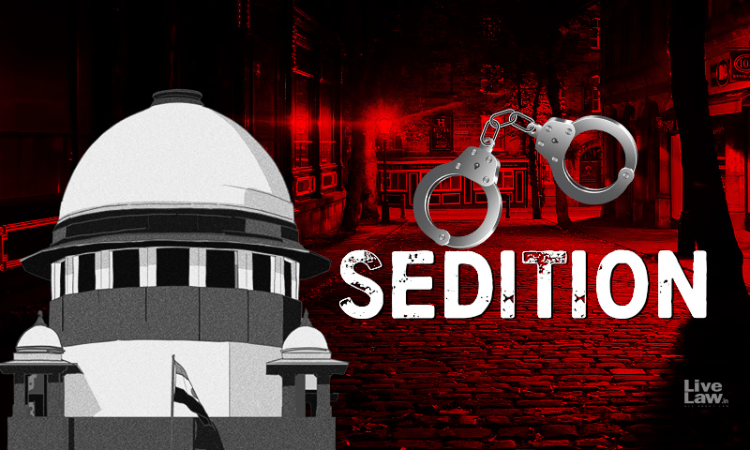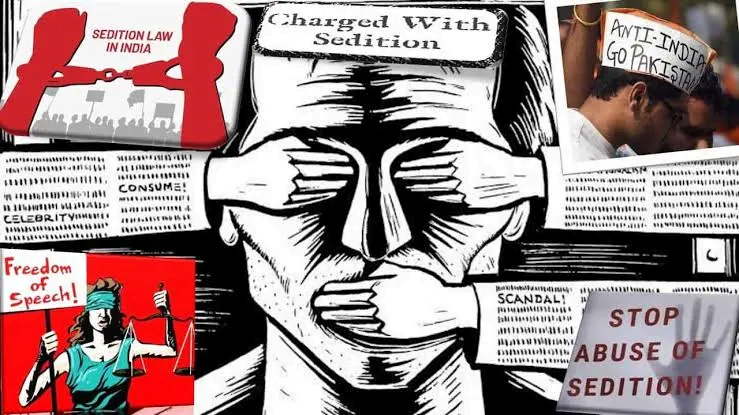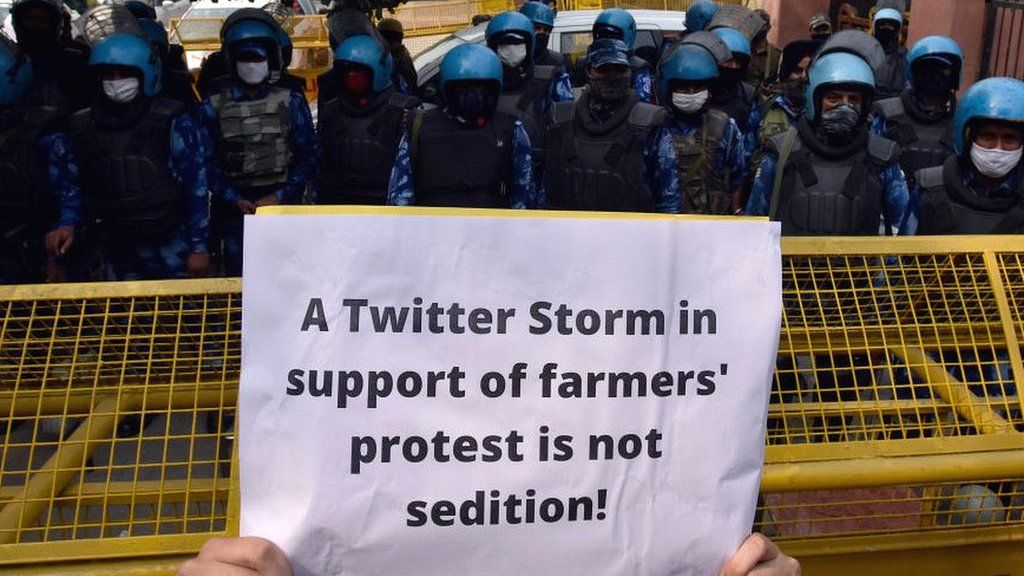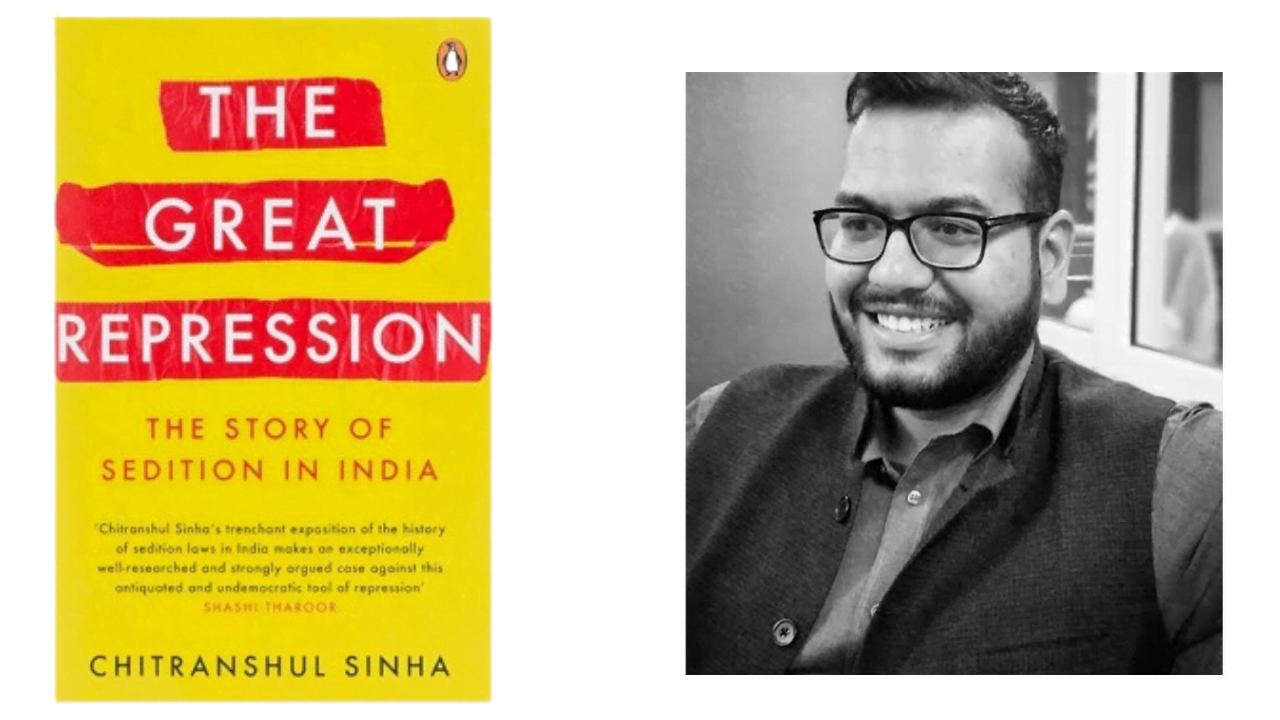Sedition was included as an offence in the initial stages of drafting the Indian Penal Code, making it one of the earliest laws enacted during the colonial era spearheaded by Thomas Macaulay’s proposed legislation in 1837. The primary aim of this law was to suppress any speech or writing that criticised the British Colonial government in India.
This law was used by the British authorities to stifle the voices of Indian freedom fighters who were actively advocating for India’s independence from British rule. Leaders such as Mahatma Gandhi, Maulana Azad Lokmanya Tilak, and Jawaharlal Nehru were among those who were targeted by this law. They were charged with sedition for their speeches and writings that expressed dissent against the British government.

In the last few years particularly after the BJP resumed power at the centre in 2014, there have been numerous instances where the ruling BJP-led authoritarian government has suppressed voices of dissent using the guise of sedition. For instance, sedition charges were slapped against a teacher and a mother whose six-year-old child had participated in a school play that protested against the CAA-NRC in Bidar, Karnataka.
Another case involves Sharjeel Imam, an activist who was accused of making inflammatory speeches at Aligarh Muslim University, and 50 students from the Tata Institute of Social Sciences, Mumbai, who were booked for raising slogans in support of Sharjeel Imam. These cases demonstrate how the sedition law has been misused, often in contravention of the Supreme Court’s directives clarifying the scope of this law.
Another case involves Sharjeel Imam, an activist who was accused of making inflammatory speeches at Aligarh Muslim University, and 50 students from the Tata Institute of Social Sciences, Mumbai, who were booked for raising slogans in support of Sharjeel Imam. These cases demonstrate how the sedition law has been misused, often in contravention of the Supreme Court’s directives clarifying the scope of this law.

In the current ecosystem of suppression, ‘The Great Repression’ by Chitranshul Sinha, an advocate on record of the Supreme Court of India, is a timely intervention and a strongly argued case against this antiquated and undemocratic tool of repression and delves into the historical context, legal framework, and practical implications of this law.
The author skillfully weaves a coherent narrative that revolves around significant milestones, presenting a chronological account of the evolution of the sedition clause in the Indian Penal Code. The story begins in 1860, with the enactment of the code, albeit without a provision for sedition. In 1870, Section 124A was added, marking a pivotal moment in its development. Subsequently, the sedition clause underwent several amendments, with two occurring prior to independence and four thereafter.
Notably, the constituent assembly debates held from 1946 to 1949 played a crucial role in shaping the discourse surrounding sedition. Another significant event was the first amendment to the Indian Constitution in 1951. However, the landmark Kedarnath judgment of the Supreme Court in 1962 stands out as a defining moment. This judgment emphasised that the offence of sedition necessitated violence or incitement thereto, highlighting that mere criticism of the government did not qualify as sedition.

The book also provides a comparative analysis of sedition laws in other countries, such as the United States and the United Kingdom. The author notes that while sedition laws exist in these countries, they are rarely used and are often viewed as archaic. In contrast, sedition laws in India are actively used to suppress dissent and criticism of the government.
Sinha presents multiple perspectives on sedition, incorporating the viewpoints of legal experts, historians, activists, and individuals affected by these laws. This multifaceted exploration allows readers to engage with a range of opinions and encourages critical thinking about the complexities and nuances of sedition in the Indian context. The author’s examination of sedition cases against Gandhi, Tilak, Azad and Nehru provokes introspection on the historical significance of these cases, the strategies employed by both the colonial authorities and national leaders, and the broader implications of sedition law on freedom of speech and expressions.
One of the book’s notable strengths lies in its balanced approach. Sinha presents multiple perspectives on sedition, incorporating the viewpoints of legal experts, historians, activists, and individuals affected by these laws. This multifaceted exploration allows readers to engage with a range of opinions and encourages critical thinking about the complexities and nuances of sedition in the Indian context.
The author’s examination of sedition cases against Gandhi, Tilak, Azad and Nehru provokes introspection on the historical significance of these cases, the strategies employed by both the colonial authorities and national leaders, and the broader implications of sedition law on freedom of speech and expressions.

The book highlights the Supreme Court of India’s (SC) concerns regarding the potential consequences of Section 124A, although it did not explicitly strike it down. Following some issues at the High Court level, the provision was eventually evaluated by the constitutional bench in the case of Kedarnath Singh vs. the State of Bihar. In this ruling, a five-judge bench of the apex court emphasised that a citizen’s right to criticize will remain protected, establishing the court’s responsibility to establish a clear distinction between the fundamental rights guaranteed under Article 19(1)(a) of the constitution and the legislature’s power concerning the security of the State and public order.
While the court concurred with the Niharendu Dutt standard, it declared that Section 124A could be considered within the permissible limits of ‘reasonable restrictions’ outlined in Article 19(2) of the Constitution. Furthermore, it introduced the ‘public order’ test, facilitating the Supreme Court’s decision-making process and advocating for a limited and infrequent application of Section 124A. The Kedarnath Case intertwined geopolitical events such as the Indo-China war, enhancing the effectiveness of Article 19(1)(a) in comparison to previous instances. Notably, the cases involving Dr. Binayak Sen and P. Hemlatha shed light on the deviations in the lower courts’ interpretations of this aspect of the ruling.
Sinha meticulously dissects the legal framework surrounding the sedition law. He examines the relevant sections of the Indian Penal Code (IPC) and explores the ambiguities and broad interpretations that allow for its abuse. Sinha highlights how terms like “disaffection” and “hatred” are subjective and subject to misuse, leading to the suppression of legitimate dissent and the stifling of free speech and also critiques the lack of precision in the definition of sedition and argues that it allows for arbitrary and selective application by the authorities.
Sinha meticulously dissects the legal framework surrounding the sedition law. He examines the relevant sections of the Indian Penal Code (IPC) and explores the ambiguities and broad interpretations that allow for its misuse. Sinha highlights how terms like “disaffection” and “hatred” are subjective and subject to misuse, leading to the suppression of legitimate dissent and the stifling of free speech and also critiques the lack of precision in the definition of sedition and argues that it allows for arbitrary and selective application by the authorities. Sinha contends that this ambiguity gives the state excessive power to curb dissenting voices, thereby undermining democratic principles.

The author further argues that the sedition law creates a culture of conformity, stifles innovation, and hampers progress by suppressing diverse perspectives. Sinha emphasises the need to strike a balance between national security and the protection of individual liberties, asserting that the current implementation of the sedition law disproportionately favours the former and advocates for greater judicial scrutiny and oversight to prevent the abuse of the Sedition Law. He calls for the courts to adopt a more expansive interpretation of free speech rights, in line with international standards and democratic principles.
The limitations of this book lie in the fact that it dedicates a significant portion, approximately 150 pages, to delving into the events of the colonial period and didn’t focus much on the misuse of sedition law by successive governments in Independent India. It is also worth noting that certain chapters conclude abruptly, often ending with intriguing anecdotes rather than the author’s comprehensive analysis of the implications of the case studies within the broader context they aim to explore.
The limitations of this book lie in the fact that it dedicates a significant portion, approximately 150 pages, to delving into the events of the colonial period and didn’t focus much on the misuse of sedition law by successive governments in Independent India. It is also worth noting that certain chapters conclude abruptly, often ending with intriguing anecdotes rather than the author’s comprehensive analysis of the implications of the case studies within the broader context they aim to explore.
Despite a few flaws, the book with its informative and accessible style is an essential primer on the sedition law. Anyone who is concerned about issues of free speech and the potential misuse of section 124A should make a point of reading this work. It provides a valuable resource for those seeking to deepen their understanding of this complex and controversial topic. Sinha’s book is a must-read for anyone who wishes to engage with the important debates surrounding the sedition law in India.
About the author(s)
Aamir Raza is a dedicated researcher based in New Delhi, India. He holds a Master's degree in Political Science from Jamia Millia Islamia University, New Delhi. He has been previously associated with Lokniti-CSDS and the Institute of Perception Studies as a Researcher. His areas of research interest include Electoral politics, representation, minority studies, ethnic politics and democratisation.





